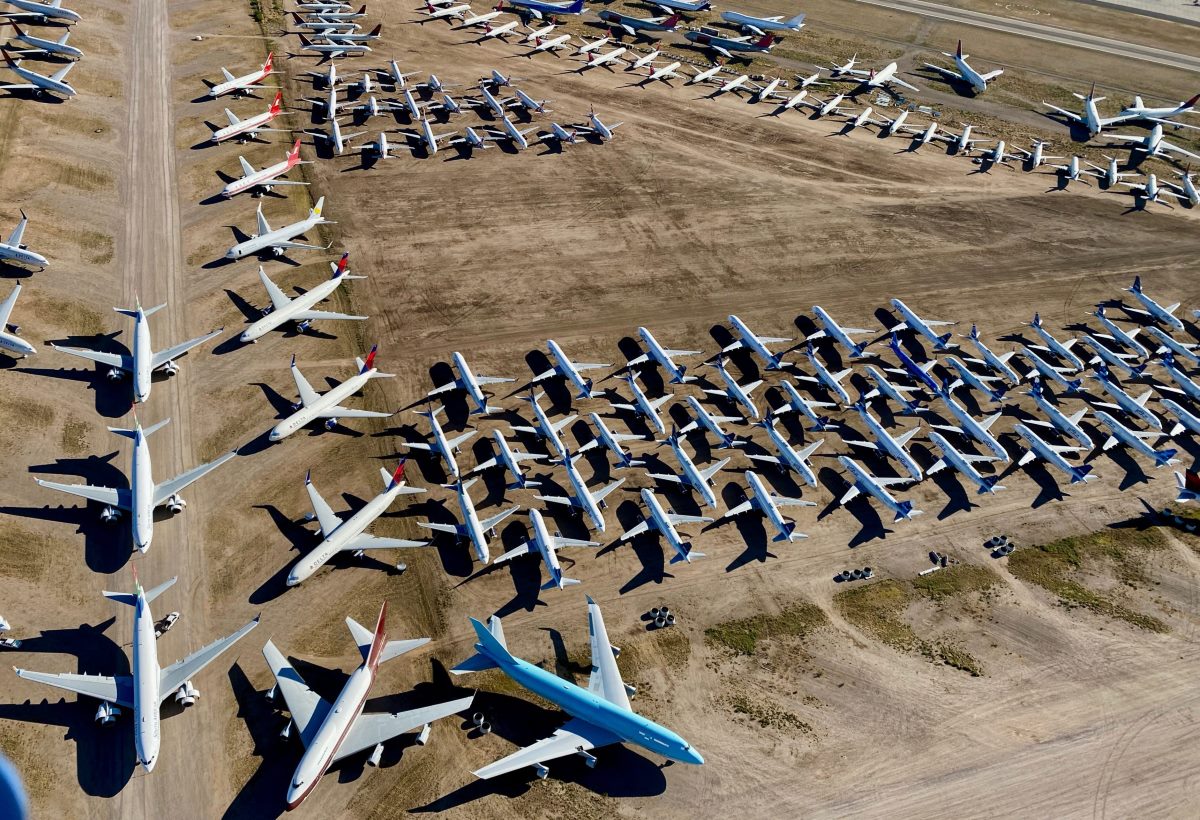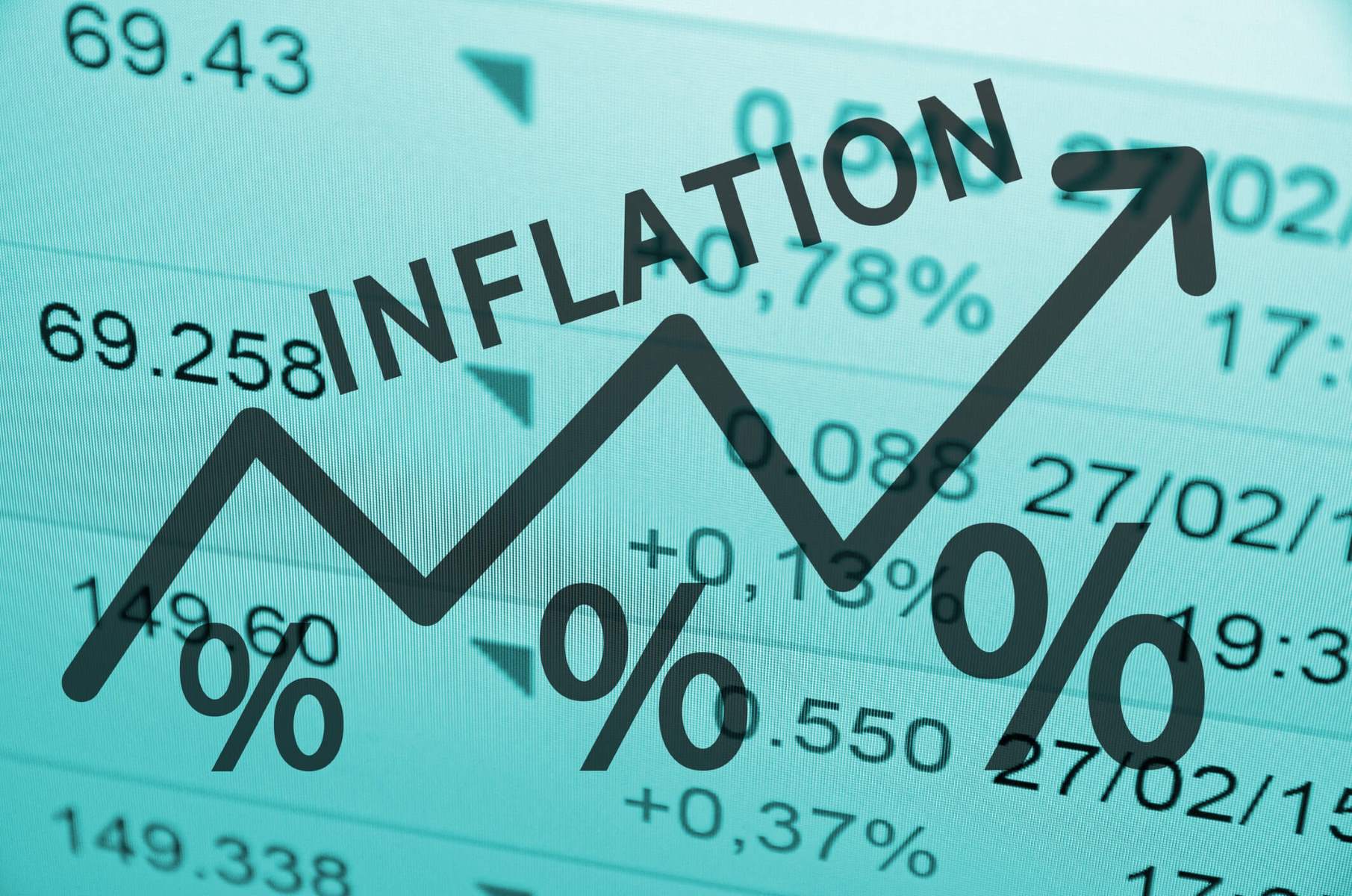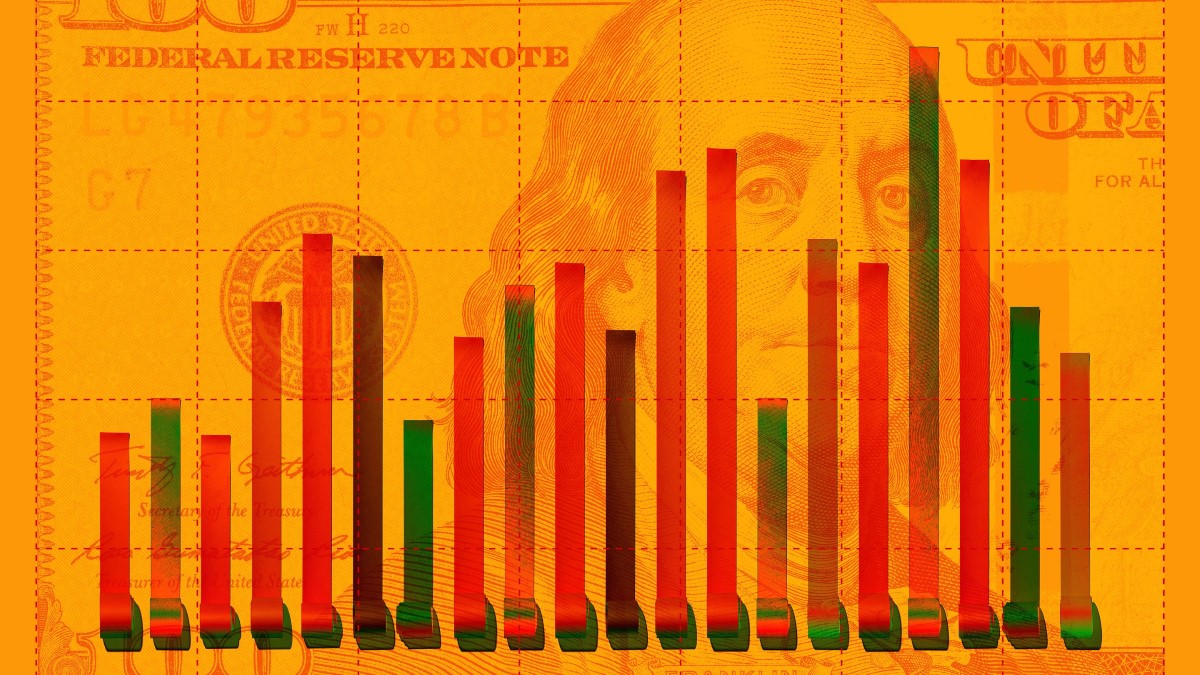Home>Finance>How Does Inflation Affect The Airline Industry?


Finance
How Does Inflation Affect The Airline Industry?
Published: October 19, 2023
Learn how inflation impacts the finance of the airline industry and discover its effects on profitability, ticket prices, and consumer demand.
(Many of the links in this article redirect to a specific reviewed product. Your purchase of these products through affiliate links helps to generate commission for LiveWell, at no extra cost. Learn more)
Table of Contents
- Introduction
- The Relationship between Inflation and the Airline Industry
- Inflation’s Impact on Operating Costs
- Effect of Inflation on Airfare Prices
- Influence of Inflation on Consumer Demand for Air Travel
- Inflation’s Effect on Airlines’ Profitability
- Strategies Employed by Airlines to Mitigate Inflationary Effects
- Conclusion
Introduction
The airline industry is a vital component of the global economy, connecting people and goods across the world. However, like any other industry, it is susceptible to various external factors that can impact its operations and profitability. One such factor is inflation.
Inflation refers to the sustained increase in prices of goods and services over time. It erodes the purchasing power of individuals and can have far-reaching effects on different sectors of the economy. The airline industry is not immune to these effects, as inflation can directly and indirectly influence its operations, costs, airfare prices, and consumer demand.
This article dives into the relationship between inflation and the airline industry, exploring how rising prices can impact airlines’ operating costs, airfare prices, consumer demand, and ultimately, their profitability. It will also explore the strategies employed by airlines to mitigate the effects of inflation. Understanding these dynamics helps stakeholders in the industry make informed decisions and adapt to changing economic conditions.
Before delving into the specific impacts of inflation on the airline industry, it is essential to understand the key factors that contribute to inflation. Inflation can be driven by various factors, including increased production costs, changes in government policies, fluctuations in currency exchange rates, and shifts in consumer spending patterns. These factors can have a domino effect on the airline industry, influencing everything from fuel prices and labor costs to the purchasing power of potential travelers.
Now let’s explore how inflation affects the airline industry in more detail, starting with its impact on operating costs.
The Relationship between Inflation and the Airline Industry
Inflation and the airline industry are closely intertwined. As inflation drives up the prices of goods and services, it inevitably impacts various aspects of the airline industry, including operating costs, airfare prices, and consumer demand. Let’s delve into these interconnected effects:
Operating Costs: Inflation can significantly impact the operating costs of airlines. One of the major cost drivers for airlines is fuel. When inflation occurs, the price of fuel tends to rise, increasing airlines’ expenditures on jet fuel. Additionally, inflation can also drive up the cost of labor, as wages and benefits increase to keep up with rising prices. Airlines often have to negotiate higher wages for their employees, which can further add to their operating expenses.
Airfare Prices: Inflation can also have a direct impact on airfare prices. As airlines face higher operating costs due to inflation, they may pass on some of these costs to consumers in the form of higher ticket prices. This is especially true for airlines operating on thin profit margins, where they may need to adjust their pricing strategies to maintain profitability. Consequently, travelers may experience higher airfare prices, affecting their travel plans and decisions.
Consumer Demand for Air Travel: Inflation can influence consumer demand for air travel. When the general price level rises, individuals may reassess their discretionary spending habits, including travel expenses. Higher airfare prices resulting from inflation may deter potential travelers, especially those on a budget or with limited disposable income. As a result, airlines may experience a decrease in consumer demand, impacting their passenger load factors and overall revenue.
Profitability: Ultimately, inflation can affect the profitability of airlines. Higher operating costs and potential decreases in consumer demand can squeeze profit margins, especially if airlines are unable to adjust their pricing strategies or reduce costs elsewhere. Inflation erodes the purchasing power of airlines’ revenue, making it challenging to maintain profitability and sustain growth in the long run.
The relationship between inflation and the airline industry is complex and multifaceted, with impacts felt throughout the industry’s value chain. To navigate the challenges posed by inflation, airlines employ various strategies to mitigate its effects, which we’ll explore in the following sections.
Inflation’s Impact on Operating Costs
Inflation can have a significant impact on the operating costs of airlines. Let’s take a closer look at how rising prices can affect different cost components:
Fuel Costs: One of the major cost drivers for airlines is fuel. When inflation occurs, it often leads to an increase in fuel prices. As crude oil prices rise, airlines face higher expenses for jet fuel, which can account for a significant portion of their operating costs. To mitigate the impact of fuel price fluctuations, airlines may enter into hedging contracts or invest in more fuel-efficient aircraft to reduce consumption and minimize fuel expenses.
Labor Costs: Labor costs, including wages and benefits for airline employees, can also be affected by inflation. As prices rise, employees may demand higher wages to maintain their purchasing power. Airlines may enter into negotiations with employee unions or implement measures to attract and retain qualified staff. However, increasing labor costs can put additional pressure on airlines’ operating budgets, making it necessary to find a balance between meeting employee demands and maintaining cost-efficiency.
Maintenance and Repair: Inflation can also impact maintenance and repair costs for airlines. As the prices of materials, equipment, and services increase, the expenses associated with maintaining and repairing aircraft can rise. Airlines must budget for these additional costs to ensure the safety and reliability of their fleet while simultaneously managing overall operating expenses.
Infrastructure Expenses: Airlines rely on various infrastructure facilities, including airports and air traffic control systems, to operate efficiently. However, inflation can influence the costs associated with these infrastructure facilities. For example, airport operators may increase landing fees, terminal rents, or other charges in response to rising operating expenses. These additional costs are usually passed on to the airlines, further impacting their overall operating budget.
Supplier Costs: Inflation can affect the costs of goods and services provided by suppliers to airlines. From food and beverages to in-flight entertainment systems, airlines rely on numerous suppliers to meet the needs and expectations of their passengers. As suppliers may face higher costs due to inflation, they may pass on these expenses through increased prices, which can add to the operating costs of airlines.
To manage the impact of inflation on operating costs, airlines employ various strategies. These can include renegotiating supply contracts, implementing cost-saving measures, and adjusting pricing strategies. Furthermore, efficiencies gained through technological advancements and operational optimizations can help mitigate the effects of inflation on overall operating costs.
Understanding the impact of inflation on operating costs is crucial for airlines to maintain financial stability and competitiveness. By carefully managing and forecasting these costs, airlines can make informed decisions and implement strategies that balance the need for profitability with delivering valuable services to passengers.
Effect of Inflation on Airfare Prices
One of the most direct ways in which inflation impacts the airline industry is through its effect on airfare prices. As inflation drives up the overall price level in the economy, airlines may be forced to adjust their pricing strategies to maintain profitability. Here are some key considerations regarding the impact of inflation on airfare prices:
Operating Costs: Inflation can significantly increase airlines’ operating costs, from fuel expenses to labor costs. To offset these rising costs, airlines may need to pass some of the burden onto consumers in the form of higher airfare prices. The extent to which airfare prices increase due to inflation can vary depending on factors such as competition in the market, the elasticities of demand for particular routes, and the overall financial health of the airline.
Dynamic Pricing: The airline industry employs dynamic pricing techniques, which involve adjusting ticket prices based on factors such as demand, seasonality, and availability. Inflation can be one of the factors considered in this pricing model. Airlines may evaluate the impact of inflation on their costs and adjust ticket prices accordingly. Dynamic pricing allows airlines to maximize revenue while considering various market conditions and cost factors.
Price Discrimination: Airlines often practice price discrimination, offering different fare levels based on factors such as passenger type, booking class, and advance purchase. Inflation can impact the pricing structure of these fare categories. For example, airlines may increase the price of premium or business class tickets by a higher percentage compared to economy class tickets to compensate for rising costs. This allows airlines to cater to different market segments and optimize revenue based on passengers’ willingness to pay.
Market Competition: Inflation can influence the competitive dynamics within the airline industry. If multiple airlines are facing increased operating costs due to inflation, they may strive to maintain market share while remaining profitable. This can lead to price competition, with airlines offering discounted fares or promotional deals to attract and retain customers. Thus, while inflation may exert upward pressure on airfare prices, competitive forces can also temper the extent of price increases.
Consumer Demand: Inflation can have an indirect impact on consumer demand for air travel. As airfare prices rise due to inflation, it may discourage price-sensitive travelers or those with limited disposable income from booking flights. However, demand for air travel is influenced by multiple factors beyond just inflation, such as the state of the economy, travel restrictions, and consumer confidence. It’s important to consider these factors alongside inflation when analyzing the effects on airfare prices and passenger demand.
Overall, the effect of inflation on airfare prices can be complex and multifaceted. While inflationary pressures can contribute to higher ticket prices, airlines must also consider market competition, demand dynamics, and pricing strategies to strike a balance between profitability and attracting customers. This delicate balancing act requires careful analysis and strategic decision-making to ensure that airfare prices remain competitive and appealing while covering the rising costs of operating in an inflationary environment.
Influence of Inflation on Consumer Demand for Air Travel
Inflation can have a significant influence on consumer demand for air travel. As prices rise across the economy, individuals may reassess their discretionary spending habits, including travel expenses. Here are some key factors to consider regarding how inflation affects consumer demand for air travel:
Price Sensitivity: Inflation can impact consumer purchasing power, affecting their ability to afford non-essential items like air travel. As airfare prices increase due to inflation, price-sensitive individuals may opt for alternative modes of transportation or choose to postpone or cancel travel plans altogether. This is particularly true for leisure travelers and those on a tight budget, who may be more price-conscious and responsive to fluctuations in airfare prices.
Disposable Income: Inflation erodes the purchasing power of individuals’ disposable income, as the cost of goods and services rises. Higher prices for everyday necessities may leave individuals with less disposable income to allocate towards travel expenses, including airfare. As a result, consumer demand for air travel may decline, especially among those who allocate a significant portion of their budget towards basic necessities.
Perceived Value: Inflation can influence consumers’ perception of the value they receive for their travel expenditures. As airfare prices rise, individuals may expect higher quality services or additional perks to justify the increased cost. Airlines may need to enhance the value proposition of their offerings, such as improved in-flight amenities or better customer service, to retain customer loyalty and stimulate demand amidst rising prices caused by inflation.
Business Travel: Inflationary pressures can affect both leisure and business travel. Companies, facing higher costs due to inflation, may decide to cut back on business travel expenses, opting for video conferences or other cost-saving alternatives. This can lead to a decrease in demand for business travel, impacting airlines that heavily rely on corporate clients. Business travel demand is particularly sensitive to price fluctuations, making it a crucial consideration when analyzing the impact of inflation on consumer demand for air travel.
Competing Travel Options: Inflationary pressures can make other modes of transportation relatively more attractive compared to air travel. For shorter distances, travelers may choose to use their personal vehicles or opt for alternative transportation methods like buses or trains, which may be perceived as more cost-effective when compared to rising airfare prices. The availability and affordability of alternative travel options can influence consumer decisions and shape the demand for air travel.
While inflation can put downward pressure on consumer demand for air travel, it’s important to note that various other factors also influence travel decisions. These factors include economic conditions, travel restrictions, consumer confidence, and personal preferences. Additionally, promotional offers, loyalty programs, and targeted marketing efforts can help mitigate the impact of inflation by incentivizing travel and maintaining customer loyalty.
Understanding the influence of inflation on consumer demand for air travel allows airlines to adapt their pricing strategies, tailor their offerings, and implement marketing initiatives that resonate with consumers’ spending patterns in an inflationary environment.
Inflation’s Effect on Airlines’ Profitability
Inflation can have a significant impact on the profitability of airlines. As prices rise and operating costs increase, airlines face various challenges in maintaining profitability. Here are some key factors to consider regarding the effect of inflation on airlines’ profitability:
Cost Pressures: Inflation can lead to higher operating costs for airlines, including fuel prices, labor expenses, maintenance costs, and infrastructure fees. These increased costs squeeze profit margins, especially if airlines are unable to pass them entirely onto consumers through higher airfare prices. As a result, airlines must find ways to manage and mitigate the impact of inflation on their operating expenses to maintain profitability.
Price Elasticity of Demand: The price elasticity of demand, or responsiveness of consumers to changes in prices, is an important factor in assessing the effect of inflation on airlines’ profitability. As airfare prices rise due to inflation, demand may become more elastic, meaning that consumers may be more sensitive to price changes and alter their travel plans accordingly. If demand decreases significantly due to higher prices, airlines may experience a decline in revenue that could impact their profitability.
Competitive Dynamics: Inflationary pressures can influence the competitive dynamics within the airline industry. If multiple airlines are facing increased operating costs due to inflation, they may engage in price competition to attract customers. This can put downward pressure on airfare prices, which can impact profitability. However, it is important to note that competitive responses to inflation can vary depending on factors such as market structure, route networks, and individual airlines’ financial health.
Revenue Management: Effective revenue management is crucial for airlines to optimize profitability in an inflationary environment. It involves dynamically adjusting pricing, seat inventory control, and targeted marketing efforts to maximize revenue from available resources. Inflation can necessitate adjustments to revenue management strategies, including pricing structures, to ensure that airlines can effectively balance demand, costs, and profitability.
Operational Efficiencies: Amidst rising costs caused by inflation, airlines must focus on operational efficiencies to enhance profitability. This may involve implementing fuel-saving initiatives, optimizing flight schedules, improving aircraft utilization, and exploring cost-saving measures throughout the organization. These operational efficiencies can help mitigate the effects of inflationary pressures and improve overall profitability.
Hedging Strategies: Airlines often employ hedging strategies to manage the volatility of fuel prices, a major variable cost. Through financial instruments such as futures contracts, options, and swaps, airlines can lock in fuel prices at predetermined levels. These hedging strategies help protect airlines from sudden price fluctuations caused by inflation, allowing for more stable cost projections and potential enhancement of profitability.
Successfully managing inflationary pressures to maintain profitability requires a comprehensive approach that considers cost management, revenue optimization, competitive dynamics, and operational efficiencies. Airlines that can adapt and respond effectively to inflationary factors while maintaining customer satisfaction and operational excellence will be better positioned to withstand the challenges and sustain profitability in the long run.
Strategies Employed by Airlines to Mitigate Inflationary Effects
Inflationary pressures can pose significant challenges for airlines, but there are strategies they can employ to mitigate the effects and maintain profitability. Here are some key strategies used by airlines to navigate the impact of inflation:
Cost Management: Airlines focus on effective cost management to mitigate the impact of inflation on their operating expenses. This involves closely monitoring and analyzing cost components such as fuel, labor, maintenance, and infrastructure fees. Airlines seek to identify cost-saving opportunities, optimize processes, and negotiate favorable contracts with suppliers to counteract rising prices caused by inflation.
Revenue Optimization: Revenue optimization is a critical strategy for airlines to maximize their profitability. By analyzing market demand, adjusting pricing strategies, and leveraging data-driven insights, airlines can optimize revenue across different fare classes, routes, and customer segments. This helps to offset rising costs and maintain competitive pricing despite inflationary pressures.
Efficiency Enhancements: Airlines continuously seek to enhance their operational efficiencies to mitigate the effects of inflation. This may involve investing in fuel-efficient aircraft, optimizing flight schedules to improve capacity utilization, and implementing lean management practices to streamline operations. By becoming more efficient, airlines can reduce costs, improve productivity, and partially offset the impact of inflation on their bottom line.
Strategic Partnerships: Collaborative partnerships with other airlines, travel agencies, and service providers can help airlines navigate inflationary pressures. Through such partnerships, airlines can pool resources, streamline operations, and benefit from economies of scale. Joint marketing initiatives, code-sharing agreements, and interline partnerships can also help maximize revenue and minimize costs, ultimately mitigating the impact of inflation.
Investment in Technology: Technological advancements play a crucial role in mitigating inflationary effects. Airlines invest in advanced revenue management systems, data analytics tools, and customer relationship management platforms. These technologies empower airlines to make data-driven decisions, optimize pricing, and provide personalized services, ultimately enhancing profitability despite rising costs caused by inflation.
Hedging Strategies: Airlines often employ hedging strategies to manage fuel price volatility, a major cost driver. By entering into financial contracts, such as futures or options, airlines can lock in fuel prices at predetermined levels, allowing for better cost forecasting and minimizing the impact of inflation-related fuel price fluctuations. Hedging strategies provide stability in cost management, thus safeguarding profitability.
Customer Experience Enhancement: Despite inflationary pressures, airlines understand the importance of customer satisfaction and loyalty. They strive to enhance the overall customer experience through improved in-flight amenities, personalized services, and efficient customer service. By providing value-added services, airlines can mitigate any negative perception resulting from increasing airfare prices caused by inflation and maintain a loyal customer base.
Continuous Financial Analysis: Regular financial analysis is essential for airlines to assess the impact of inflation on their profitability and make informed decisions. By closely monitoring financial metrics, identifying trends, and conducting scenario analyses, airlines can proactively adjust their strategies to mitigate inflationary effects. This includes evaluating cost structures, pricing models, and potential revenue streams to navigate changing economic conditions due to inflation.
By implementing these strategies, airlines can mitigate the effects of inflation and maintain their competitiveness and profitability. Adapting to inflationary pressures requires a proactive and comprehensive approach that focuses on cost management, revenue optimization, operational efficiency, and customer satisfaction. Airlines that successfully navigate these challenges are better positioned to thrive in an inflationary environment.
Conclusion
Inflation has a significant impact on the airline industry, affecting operating costs, airfare prices, consumer demand, and airline profitability. Rising prices, fueled by inflationary pressures, can lead to increased fuel and labor costs for airlines, squeezing profit margins. To maintain profitability, airlines must carefully manage and mitigate the effects of inflation through strategies such as cost management, revenue optimization, efficiency enhancements, and strategic partnerships.
Airlines must navigate the delicate balance between adjusting airfare prices to cover rising costs and remaining competitive in a price-sensitive market. Price elasticity of demand, market competition, and consumer perception of value all play a role in determining the extent to which airlines can pass on these costs to consumers.
However, inflation not only affects airlines’ costs but also influences consumer demand for air travel. As airfare prices rise due to inflation, price-sensitive travelers may opt for alternative modes of transportation or postpone travel plans. Additionally, business travel demand may be impacted as companies seek to cut back on expenses in an inflationary environment.
Despite these challenges, airlines employ various strategies to mitigate the effects of inflation. Efficient cost management, revenue optimization, technology investment, and hedging strategies help airlines optimize their operations and maintain financial stability. Additionally, enhancing the overall customer experience and forming strategic partnerships contribute to airline resilience amidst inflationary pressures.
In summary, navigating the impact of inflation requires a comprehensive understanding of the relationship between inflation and the airline industry, as well as proactive strategies to counteract rising costs and sustain profitability. By carefully managing operating costs, adjusting pricing strategies, and optimizing revenue streams, airlines can weather the challenges posed by inflation and continue to provide essential transportation services to passengers around the world.














